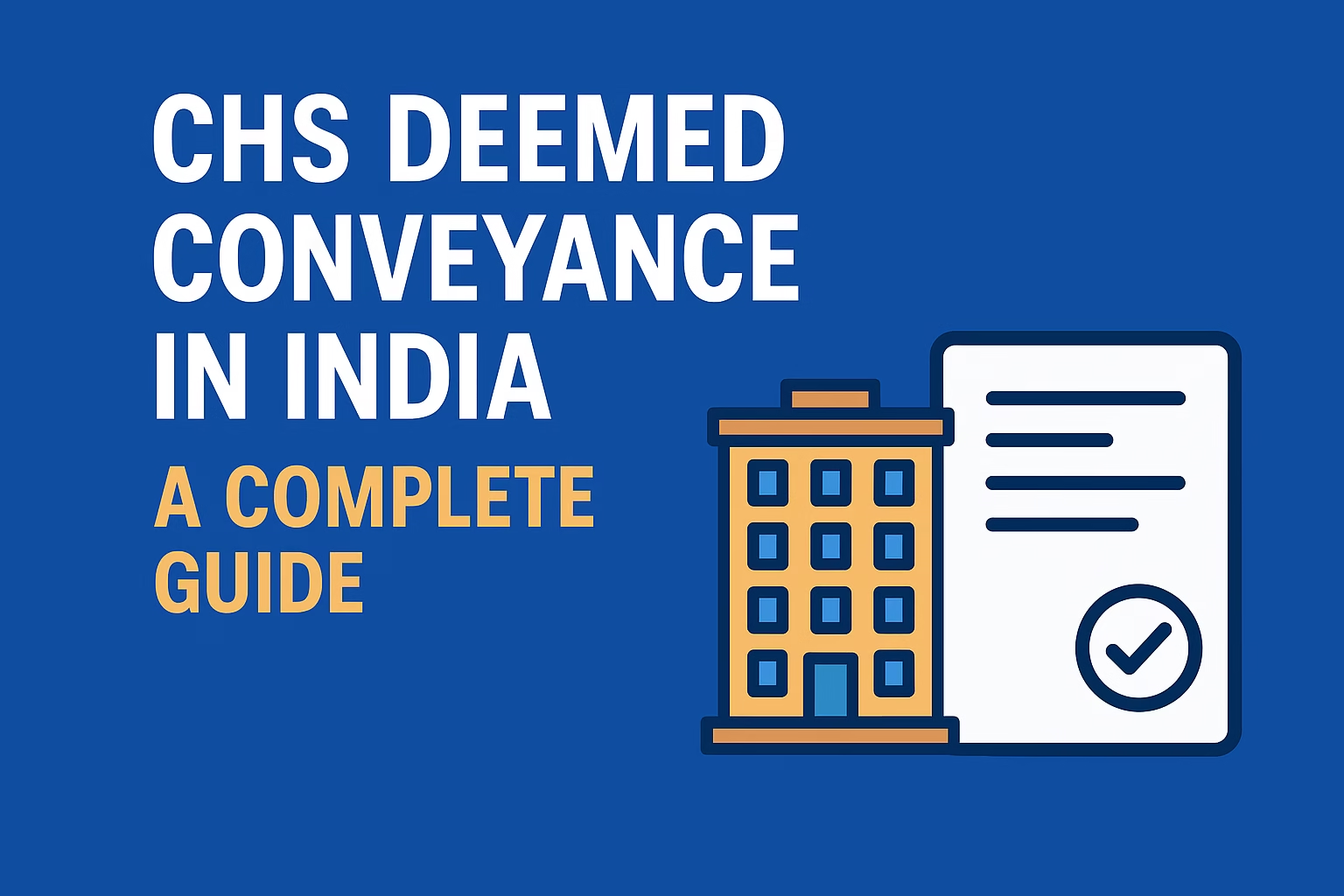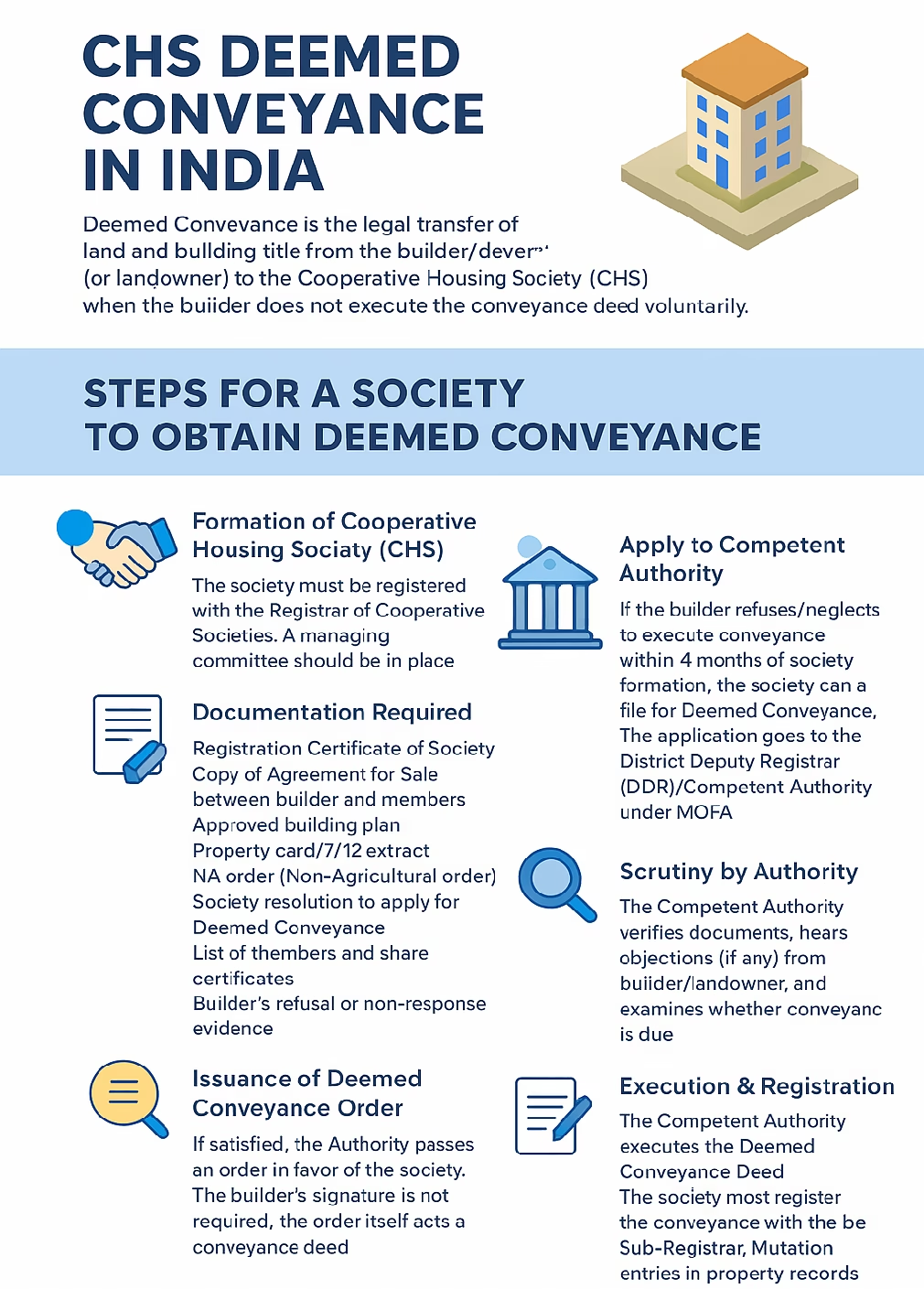
Introduction
Deemed Conveyance is one of the most critical legal processes for Cooperative Housing Societies (CHS) in India, particularly in Maharashtra. It ensures that the ownership of the land and building is officially transferred from the builder or landowner to the society. Many societies face challenges when builders delay or refuse to execute the conveyance deed. In such cases, the law provides a remedy through the Deemed Conveyance process.
This article explains the concept, steps involved, and why every society should pursue deemed conveyance for legal ownership and redevelopment opportunities.
What is Deemed Conveyance?
Deemed Conveyance refers to the legal transfer of title of land and building in favor of a registered housing society, without the builder’s cooperation, when the builder fails to execute the conveyance deed within the prescribed time. The process is carried out under the provisions of the Maharashtra Ownership Flats Act (MOFA), 1963.
Why is Deemed Conveyance Important?
- Grants legal ownership of land and building to the society.
- Helps in updating 7/12 extracts and property card in the society’s name.
- Enables the society to undertake redevelopment projects in the future.
- Protects members from disputes with the builder/landowner.
- Ensures better control over common areas and society assets.
Steps for a Society to Obtain Deemed Conveyance
- Formation of Cooperative Housing Society (CHS)
- The society must be registered with the Registrar of Cooperative Societies.
- A managing committee should be in place.
- Apply to Competent Authority
- If the builder refuses/neglects to execute conveyance within 4 months of society formation, the society can file an application.
- The application is submitted to the District Deputy Registrar (DDR) / Competent Authority under MOFA.
- Documentation Required
- Registration Certificate of the Society
- Copies of Sale Agreements between builder and flat owners
- Approved building plan
- Property Card / 7/12 extract
- NA (Non-Agricultural) order
- Resolution passed by society to apply for deemed conveyance
- List of members and share certificates
- Proof of builder’s refusal or non-response
- Scrutiny by Authority
- The Competent Authority reviews documents.
- Objections from builder/landowner are heard.
- A decision is made on whether conveyance is due.
- Issuance of Deemed Conveyance Order
- If satisfied, the Competent Authority issues an order in favor of the society.
- Builder’s signature is not required; the order itself acts as a conveyance deed.
- Execution & Registration
- The Authority executes the deed.
- The society must register it with the Sub-Registrar.
- Mutation entries are updated in property records in the society’s name.
Key Points to Remember
- A society does not need the builder’s cooperation once the deemed conveyance is ordered.
- The process is legally binding and can be challenged only in higher courts if wrongly executed.
- Deemed conveyance helps societies safeguard their property rights for the long term.
Infographic: Step-by-Step Deemed Conveyance Process

Conclusion
Deemed Conveyance is not just a formality—it is an essential legal step to secure the ownership rights of your housing society. By following the proper process and seeking professional assistance where required, societies can gain control over their property and plan for redevelopment without disputes.
